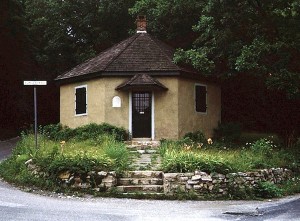In the days leading up to the May Primary, comparison of expenditures between State House 157 Republican candidates Ken Buckwalter and Warren Kampf was discussed on Community Matters. At that time, some Community Matters readers criticized me for not discussing the expenditures of Democrat candidate State House Representative Paul Drucker. I explained that as an unopposed, endorsed candidate I thought it would be more appropriate to compare Drucker’s campaign expenses after the Primary (when we knew the identify of his Republican opponent). However, as a reader has recently commented, the Primary is over, Warren Kampf is the Republican candidate and the campaign finance reports are available.
Comparing the latest campaign finance reports of 5/3/10 of both Drucker and Kampf was an interesting exercise. (Campaign finance reports are public documents). Looking at the campaign finance reports shows you various things, including the level of funding received by candidates, listing of candidates expenditures and specific donations received by the candidates.
Here are the candidates totals as of 5/3/10:
- Combining candidates contributions carried over from 2009 with funds raised during the first 4 months of 2010: Drucker $65,925.02; Kampf $58,448.49.
- Total expenditures of candidates: Drucker $53,297.25; Kampf $33,896.18.
- Ending available balance of candidates (after deducting expenditures and unpaid debts): Drucker $9,627.77; Kampf $14,907.31.
Looking at Schedule III of the campaign finance reports for Drucker and Kampf, it is interesting to look at how each candidate spent money. Below is a breakdown of the top expenses of each campaign:
- Major Drucker Campaign Expenses: $33,716.98 consulting; Paoli office rental $1,000/mo plus utilities; Phoenixville office rental $450/mo; $1,025 computer software.
- Major Kampf Campaign Expenses: $14,445 mailers; $6,535 consulting; $7,107 postage; $5,500 website; $1,982 signs
So where did the candidates receive their major campaign funding to date? The campaign finance report details the (1) Political Committee Contributions of $50.01 to $250 and over $250 and (2) All Other Contributions of $50.01 to $250 and over $250. Any contribution of $50 or less is not required to be reported.
Both candidates have received many donations from generous supporters. For the purposes of this discussion, I am only going to focus on the contributions that are $1,000 or greater.
In the category of Political Committee Contributions $1,000 or greater, the candidates received the following donations:
- Drucker: Bricklayers Local 1 $1,000; Citizens Elect Dwight Evans for State Rep $2,500; International Electrical Workers $1,000; Iron Workers Local 401 $1,000; LawPac $1,000
- Kampf: Aqua America Political Action Committee $1,000, White and Williams LLP PAC $2,000
In the category of All Other Contributions $1,000 or greater, the candidates received the following donations:
- Drucker: Michael Barrett, Esq. $1,000; Larry Bendesky, Esq. $1,000; Stewart Eisenberg, Esq. $1,000; Ronald Kovlar, Esq. $1,000; Robert Mongeluzzi, Esq. $1,000; Deborah Willig, Esq. $1,000
- Kampf: Paul Olson $2,500; John Piasecki $1,000; Robin Kohn $1,000; Edmund McGurk $1,000; James McErlane, Esq. $5,000
I remember hearing that the State House 157 race between Paul Drucker and Guy Ciarrocchi was the most expensive race in Pennsylvania’s 2008 election year. The amount of money spent on the 2008 race was shocking. How will the contributions in the Drucker and Kampf match up to the 2008 level of funding? Although the campaign contributions and expenditures indicated in the campaign finance report for Drucker and Kampf would seem high, I think it is safe to assume that raising money in today’s economic climate will be far more difficult than just a couple of years ago.
But then again, should it really need to cost $500K or more to win a Pennsylvania state representative seat? Personally, I would hate to think that Drucker and Kampf will expend anywhere near that kind of money between now and November’s general election. Much time can be spent by candidates “dialing for dollars” to a select few rather than talking with a wide range of voters about their beliefs, hopes and needs. It would seem that the endless competition for funds from special interest groups weakens the role of civic dialogue and can create ineffective governance.
Pennsylvania is one of only five states that have no contribution limits and no public financing of elections. As a state representative in Pennsylvania, with a 2-year term, you no sooner are elected than you are soliciting funds for the next campaign – almost as if fundraising becomes a second profession. The lax laws mean a candidate can spend an enormous amount of money on a campaign. This puts pressure on incumbents to keep their coffers filled in case of a well-financed challenge.
The rules on funding campaigns in Pennsylvania need to change. There are good proposals out there; lawmakers just need courage to vote on them.


